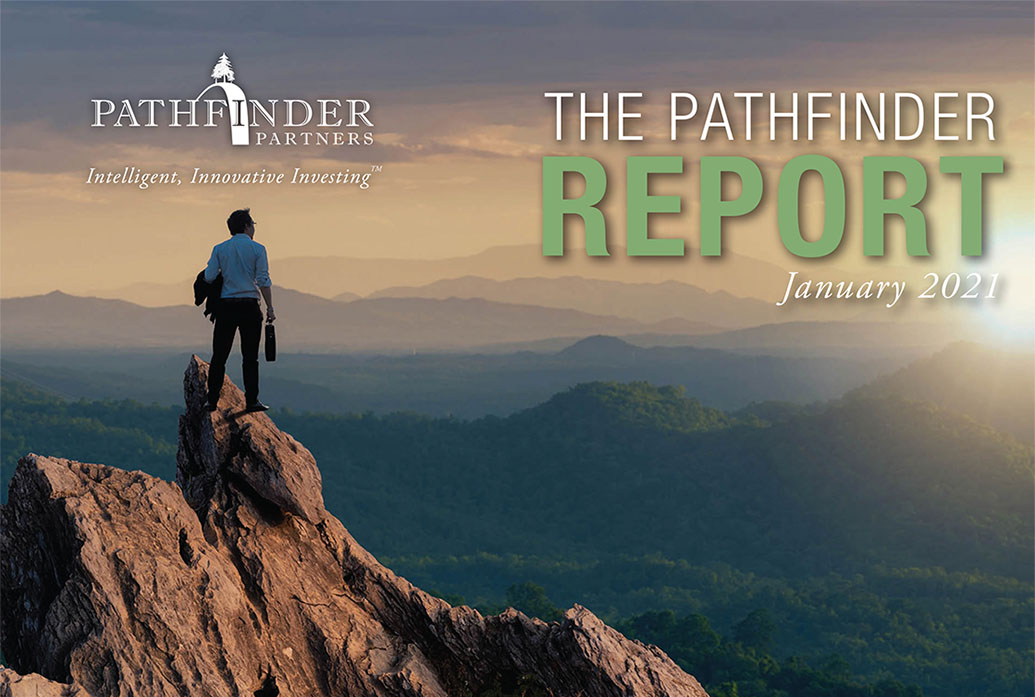Charting the Course
Why the Next Few Years Could be a Golden Age for Multifamily Investing
By Mitch Siegler, Senior Managing Director
 Reverse chronology is a method of storytelling where the plot is revealed in reverse order – the first scene is the conclusion, and the story unfolds in reverse until the final scene – the beginning. In that spirit we will begin with the conclusion – the next few years could prove to be a golden age for multifamily investing – and then set the table as to the reasons why.
Reverse chronology is a method of storytelling where the plot is revealed in reverse order – the first scene is the conclusion, and the story unfolds in reverse until the final scene – the beginning. In that spirit we will begin with the conclusion – the next few years could prove to be a golden age for multifamily investing – and then set the table as to the reasons why.
The economy, sizzling before the pandemic, should come roaring back this year – This is an economic downturn precipitated by a health crisis. Once the health crisis is resolved, we expect the economy to rebound strongly. In fact, we’re hearing many comparisons to The Roaring ‘20s. We expect a strong economic recovery this year continuing into 2022 and perhaps beyond. For perspective, let’s look at the 2008 Great Financial Crisis (GFC). That was a downturn precipitated by the financial system with poor lending practices, excessive spending on homes, cars, boats and more. The GFC ended in June 2009 but we didn’t return to full employment until 2018 (eight years later). This recession is fundamentally different, and many economists predict a return to full employment in 2023 (just three years later). During the GFC, the government stimulus needed to be redeployed back into the banking/financial system to shore it up. This time around, there was not excess spending preceding the downturn, the stimulus has been much greater already and it all flowed to people instead of the banking system. In many cases – because people didn’t travel and restaurants were closed – there weren’t many things to spend money on, leading to historically excess savings. So, when economic growth is unleashed, it could be like a tsunami.
Increased consumer and business confidence – Confidence is the key to a strong economy. We now have a new President articulating a national health plan and are making solid progress vaccinating millions more Americans each week. Half of Americans could be vaccinated by mid-year. Adding those who have been previously infected, Americans could achieve herd immunity by Labor Day. Business productivity and corporate profits have been strong for the majority of companies which were not hammered by the pandemic.
Robust job growth – When we review potential markets as multifamily investment candidates, we begin by assessing an area’s population and job growth since these are key ingredients for household formation and determining the total addressable market (how many prospects could pay rent). We are coming off the heels of the deepest recession in a century with 22 million jobs lost last March-April (when unemployment hit 14.8%) – we are still down a mind-boggling 9.8 million jobs! Many economists forecast a sharp spring-back in the months ahead. Data firm IHS Markit Insight forecasts U.S. nonfarm payrolls increasing by 6.7 million by December 2021. Oxford Economics predicts 5.8 million jobs and University of Michigan forecasts 5.3 million – all are above the 4.3 million jobs created in 1946, the beginning of the post-WWII boom, the best year for job growth on record. IHS Markit forecasts that we will still have unemployment of 4.3% by the end of 2021 while other, more bearish economists are calling for 5.5% to 6.0% (down from 6.7% in December). After all, tens of thousands of businesses closed permanently. Looking further ahead, Moody’s Analytics expects jobs will return to pre-pandemic levels by late-2022 and thinks the unemployment rate will fall below 4%, pre-pandemic levels, by late 2023.

Strong income growth – Prior to the pandemic, the economy was at or near full employment. There was very little slack in the economy and wage pressures were beginning to build. While there’s little pressure on wages today – especially in the hard-hit travel, hospitality and restaurant sectors – the Biden Administration’s push for a $15 national minimum wage would spark wage growth. And certain regions could feel it sooner. Migration out of gateway cities like New York and San Francisco to places like Orlando and Boise translates into highly paid technology workers with a much lower cost of living and lots more disposable income. Effectively, these people received a substantial pay increase since their salaries remain unchanged while their cost of living fell dramatically. While the exodus may pressure pricier Class-A apartment properties in the San Francisco Bay Area and Los Angeles (where rents at new, Class-A properties have fallen 20% in a few months), it really does not change the highly favorable equation for value-conscious renters in suburban, Class-B properties, like Pathfinder’s.
Migration – The exodus from urban to suburban areas and associated capital flows for new apartment projects in secondary/tertiary markets had been occurring for a decade before the pandemic. An estimated 60% of capital for new apartment projects is now targeting these areas, up from 45% in 2010. The shift in population creates winners and losers. The more expensive, Class-A properties in gateway cities are the losers since the pull from theater, nightlife, restaurants, and bars isn’t too strong with most venues closed and residents shunning subways. Some who left moved to the ‘burbs to save 30% on rent and have less density. Others leveraged work-from-home to get out of Dodge entirely by moving to smaller, less expensive cities with more open space. New York, San Francisco, and Los Angeles lost while Phoenix, Denver, Boise, California’s Inland Empire, Dallas, Atlanta and Orlando won. We would not write off big cities and expect the excess apartment supplies there to be absorbed fairly soon. In the short-term, landlords will use concessions to fill those properties. In the medium-term, new construction there will slow. In the longer-term, people will return as the hustle and bustle of big cities has been a draw for centuries and that won’t change. Meanwhile, some of those who moved to smaller cities will like what they experienced and some of this growth will stick. Since some level of work-from-home will be a permanent fixture, suburbs and smaller cities are poised to benefit.
More government stimulus – In 2020, fiscal and monetary stimulus totaled $4 trillion, including the $900 billion economic stimulus bill Congress passed just before year-end. Struggling Americans are now getting some relief after months of very limited help from their government. Unfortunately, it’s a Band-Aid and many of these people in jobs that can’t be done from home will remain vulnerable years into the future. The Biden Administration is seeking an additional $2 trillion in stimulus, including additional enhanced unemployment benefits, stimulus checks of $1,400 to $2,000 per person and potentially some rent relief. Virtually all Democrats and some Republicans in Congress are supportive of dramatic stimulus. Without commenting on the long-term wisdom of such stimulus, it seems certain to jump-start an economic recovery in the short-term. Take it to the bank that we will have trillions in additional stimulus this year.
More household formations in next few years – Much of the government stimulus to date has been saved – the excess savings rate (over historical levels) has been $2.6 trillion since last March, according to Federal Reserve data analyzed by real estate firm Marcus & Millichap (M&M). Some of this will be used by first-time home buyers but the vast majority will not. We think stimulus checks will provide an incentive to lease an apartment for the millions of young people who have moved back home with their parents. Today, an astonishing 33.6% (24.9 million) of young adults are living with their parents – 5.1 million above the long-term average, according to M&M. This has been a long-term trend that was greatly accelerated with the pandemic.
A protracted period of low interest rates – Long-term interest rates (currently 1.10% on the 10-year Treasury), are extraordinarily low. We have financed recent purchases with long-term, fixed rate debt with rates of 2.85% to 3.50%. We expect and are prepared for rates to move higher – it is a question of when, not if. It has already begun; the 10-year, 0.95% before the Georgia Senate elections, rose to 1.10% in two weeks and may reach 1.50% in a few months. We do expect 2021-2022 to remain a very attractive borrowing environment and the Fed’s messaging about keeping the Fed Funds rate near zero until 2023 suggests the continuation of historically low rates for a while. But too much pressure in the boiler could cause the economy to blow off steam and the Fed would move hard to protect against inflation. While the consensus is for the 10-year Treasury to peak at 3%, inflation could boost this to 4% or 5%. Accordingly, we think it is wise to fix interest rates rather than rolling the dice with floating rate loans.
Increasing inflation on the horizon – The Federal Reserve has long been targeting a 2% rate of inflation. It is good advice not to bet against the Fed – they will get what they want. While inflation may not yet be apparent in wages and many consumer sectors, inflation is widespread in financial asset prices (escalating stock and real estate values). The S&P 500 (stock market) index is up 56% from its March 2020 lows. Single-family home prices are on fire; sales were up 25% and median prices up 15% year-over-year, according to M&M. Expect higher inflation in a year or two. For the Fed to thread the needle between full employment and inflation pressures will be no easy feat. Once inflation goes beyond 2%, inflation expectations can rise leading to more pressure on wages and prices. And the pandemic has really consolidated market share (think grocers, leading brick and mortar retailers and Amazon). Greater market share means less competition and more pricing power. Commodity supplies have also been consolidated as capacity has been taken out of the system (think oil, chemicals, building materials and furniture). We have already seen big increases in prices for some of these things and will likely see an acceleration of the trend as we return to normal. Why all this talk of inflation? It would likely boost real estate values, including apartments.

Investment thesis for apartments remains strong – We have long said that the supply/demand imbalance for housing underpins a strong investment case for apartments. Looking ahead, not only is the case for apartments intact, it has strengthened since the pandemic began. However, the 2019 playbook is no longer relevant. Apartment demand and economic performance in the suburbs and secondary/tertiary markets has been excellent while demand and performance of Class-A properties in big cities has been tepid. Pension funds and endowments with real estate allocations may flee the hospitality, retail and office sectors and that capital could flow to the multifamily and industrial sectors.
No shortage of tailwinds. What could go wrong?
Two headwinds that concern us are excess supply and regulations targeting landlords.
Too much new supply – So far, strong demand for apartments has kept most buildings fully-occupied, despite the pandemic and competition from a flood of new apartments. The percentage of occupied apartments inched slowly downwards to 93.2% in the fourth quarter of 2020 from a peak of 93.8% in the second quarter of 2019, according to CoStar. That is a decline so slight, it’s hard to see in the data.
Developers are expected to open 403,000 new apartments in 2021, with much of that concentrated in downtowns already crowded with new apartments, according to RealPage. Even if thousands of those units are delayed, 2021 will be the biggest year for multifamily deliveries in decades. New supply this year is expected to rise 17% from 2020 levels, when developers completed 344,000 new apartments despite the pandemic. Compare that to new supply averaging about 200,000 units annually most years since 2000, according to RealPage. And there is still a fair bit of supply in the pipeline since some projects were delayed and many timelines were extended.
Some projects will be mothballed but many will move forward since the land has already been acquired and the equity already committed. Most of these projects are Class-A in downtown areas in gateway cities – that’s where the construction has been concentrated and it’s a trend unlikely to radically change in the next year or two. Supply pressures in urban centers combined with the population exodus makes those areas a renter’s market – you can likely save 20% on your rent or receive a couple of months’ free rent on a 12-month lease in L.A., S.F. and N.Y. today. The migration to suburbs makes the ‘burbs more balanced, tilting to a landlord’s market in some areas. Rent growth will likely be turbocharged in places like Boise and Orlando which have seen far more population growth than new supply.
If you invest in Class-B properties in most suburbs, you should be fine in the short-term and good in the long-term. If you invest in Class-A properties in urban areas where restaurants, theaters and mass transit are largely closed, buckle up and prepare for a rough ride in 2021-2022.
 Regulations – The other big risk is the hardest to forecast but the one that keeps many investors up at night: regulations like rent control and vacancy control. California had rent control ballot initiatives in 2018 and 2020. While they failed both times, they will almost certainly be back. Washington and Oregon are hotbeds for these types of initiatives and local regulations as well. #Cancelrent trended in many cities during the pandemic and these knee-jerk reactions to systemic challenges are not likely to go away in the current climate.
Regulations – The other big risk is the hardest to forecast but the one that keeps many investors up at night: regulations like rent control and vacancy control. California had rent control ballot initiatives in 2018 and 2020. While they failed both times, they will almost certainly be back. Washington and Oregon are hotbeds for these types of initiatives and local regulations as well. #Cancelrent trended in many cities during the pandemic and these knee-jerk reactions to systemic challenges are not likely to go away in the current climate.
Optimists always, we want to end on a happy note. There’s light at the end of the tunnel, we have a new leadership team in Washington, the vaccination curve is steepening, the economy is strengthening and spring is just around the corner. The tailwinds for multifamily investing (including prospects for outstanding economic and job growth and government stimulus this year and ultra-low interest rates for several years) far outweigh the headwinds in most markets.
Mitch Siegler is Senior Managing Director of Pathfinder Partners. Prior to co-founding Pathfinder in 2006, Mitch founded and served as CEO of several companies and was a partner with an investment banking and venture capital firm. He can be reached at msiegler@pathfinderfunds.com.
Share this Article
IN THIS ISSUE
PATHFINDER PARTNERS INCOME FUND, L.P.
A Stablized Multifamily Fund
CHARTING THE COURSE
Why the Next Few Years Could be a Golden Age for Multifamily Investing
FINDING YOUR PATH
A Time for Leadership and a Time to Heal
GUEST FEATURE
Act Quickly, But Decide Slowly - Lessons Learned During a Pandemic
ZEITGEIST: NEWS HIGHLIGHTS
TRAILBLAZING
Park Paloma, Phoenix, AZ
NOTABLES AND QUOTABLES
Reflection
